Kroger and Albertsons announced a definitive merger agreement Friday, October 14th, that would expand reach to approximately 85 million households.
So, what does this announcement mean for suppliers?
First, let’s put this deal in context.
Kroger + Albertsons/Safeway
-
- Kroger would expand from 2800 to 5000 stores
- Kroger sales would jump from $125b to $200b (excluding fuel)
- Kroger market share would climb from 13% to 20%, but remain below Walmart’s share
- Kroger would shift from “best in class” market by market position (as defined by #1/#2 in each market) to “world class” – best grocery footprint + real estate by far
Positive Outlooks for Suppliers
1. If Albertsons/Safeway has been a pain point, both on distribution gains as well as on cost structure, a merger is the best outcome that could accelerate what was taking years to develop.
-
- Kroger has an exceptional GO-driven buying office that still gives some autonomy to the regions, but Albertsons had yet to really get to resolve its own complexity here.
- It might take some time, but Kroger has enough experience in centralized buying (and buying other grocery banners) to make this work more efficiently for all.
2. If your brand is underdeveloped at Albertsons or has struggled to keep up with market velocities, Kroger should help pick up the pace.
-
- It’s also important to note that smaller regional grocers will continue to fall further behind, particularly the ones that don’t have as much muscle.
- Therefore, Kroger should continue to gain share in most markets over the medium-long term, even if they have to shed stores to do it.
- The gem of the Albertsons/Safeway portfolio will be even stronger with Kroger management (Jewel in Chicago is most notable, but northern California and New England are also big wins).
3. Kroger will help suppliers get more data and more out of the data.
-
- 84.51 will likely move from the gold standard to platinum, and it may become as much of an earnings engine for Kroger as selling groceries.
- Kroger digital and KPM will also be even more valuable and important to master, which will be extremely important gateways to win across a base of 5,000 stores.
4. The map of Ocado expansion opportunities just got more interesting.
-
- Ocado is meant to be one of Kroger’s biggest long-term bets, and a larger physical footprint will likely help capture digital reach across the entire country with few if any holes now (including the Northeast, Florida, Chicago, and Florida).
Additional Points for Suppliers to Consider
1. If your business is over-developed at Albertsons/Safeway, as defined by over 15-20% of total shipments, then this might turn into some short-term headwind based on the likelihood of closed/sold stores.
-
- The odds of the FTC blocking this deal are much less than 5-10 years ago, but there will still be some markets where concentration will be too high.
- Southern California is the most extreme overlap between Kroger-Albertsons-Safeway, followed by Texas and the Pacific Northwest. Colorado would also be on the list.
- If your brand over-indexes to any of these markets, there could be a pinch with lost sales.
2. If your team has cracked the code on regional buying that has given greater shelf share than other retailers, this could change in the next 12-24 months.
-
- The biggest practical change to expect in working with Kroger vs. Albertsons/Safeway is central procurement. For most, that will be a plus. But for some, it opens the doors to bigger competitors.
3. Cost to serve Kroger might be going up soon.
-
- Both absolute and relative dollars invested into a $200b enterprise will likely be coming.
- Expect more required investments into data and KPM (which could be a plus too).
Overall, the future is very bright for Kroger and this deal greatly accelerates the retailer’s go-to-market strategy. For more details on the deal and to gain insight into the strategy behind it, we encourage you to read the full announcement here. If you’re interested in learning more about how Harvest Group represents our clients at Kroger, reach out to us at hello@harvestgroup.com or fill out our Contact Us form here.
“We are bringing together two purpose-driven organizations to deliver superior value to customers, associates, communities and shareholders,” said Rodney McMullen, Kroger Chairman and Chief Executive Officer, who will continue serving as Chairman and CEO of the combined company. “Albertsons Cos. brings a complementary footprint and operates in several parts of the country with very few or no Kroger stores. This merger advances our commitment to build a more equitable and sustainable food system by expanding our footprint into new geographies to serve more of America with fresh and affordable food and accelerates our position as a more compelling alternative to larger and non-union competitors. As a combined entity, we will be better positioned to advance Kroger’s successful go-to-market strategy by providing an incredible seamless shopping experience, expanding Our Brands portfolio, and delivering personalized value and savings. We’ll also be able to further enhance technology and innovation, promote healthier lifestyles, extend our health care and pharmacy network and grow our alternative profit businesses. We believe this transaction will lead to faster and more profitable growth and generate greater returns for our shareholders.”


